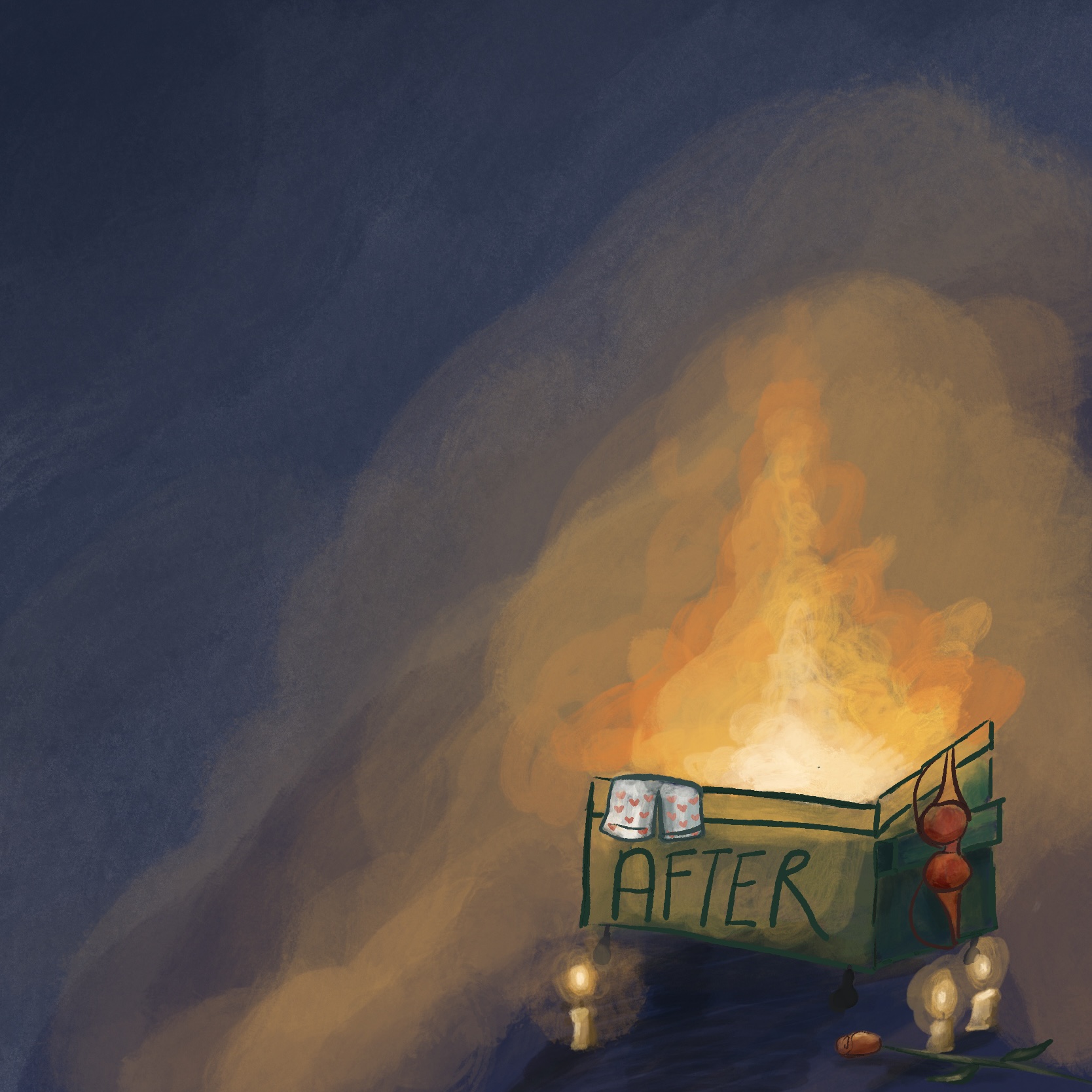One cursed weekend last February, my friends and I made a life-altering decision: to marathon the After movies. What we witnessed was a plot disaster propped up by toxic masculinity and romanticization of abusive relationships, and absolutely no continuity—even the casting wasn’t consistent. And yet, we ate it up.
After (2019) first began as Harry Styles fanfiction published to Wattpad in 2013 by Anna Todd. Subsequent popularity saw the work picked up by publishing house Gallery Books, where Todd continued to publish four follow-up novels. The first movie in the franchise was released on Netflix and three more followed—After We Collided (2020), After We Fell (2021), and After Ever Happy (2022). (Yes, that’s the actual name.)
The After franchise belongs to a long line of stories that have fallen down the fanfiction-to-smutty-movie pipeline made popular by the likes of Fifty Shades of Grey and The Kissing Booth. But why are people entertained by these films? The only explanation I can come up with is that hate-watching is one of the most powerful motives for consuming media. I became so attached to these movies not because they were masterpieces, but because they were completely awful. The acting, the casting, the costumes, the writing, the attention to detail—every single aspect failed to produce any sense of verisimilitude. It was absurd.
But first, let’s go over the premise of the first installment in the sexy saga. Tessa Scott (Josephine Langford) is a naive college freshman with no intention of rocking the boat; however, soon after arriving at Washington Central University, her more experienced roommate introduces her to the mysterious Hardin Scott (Hero Fiennes Tiffin)—read: That’s the Harry Styles. Hardin wears all black, always looks angry, and has never been rejected by a woman until Tessa refuses to kiss him in an unfriendly game of Truth or Dare. Shocker.
Thus begins an endless on-again-off-again obsessive relationship: have sex, lie, expose said lie, fight, break up, and have make-up sex. Repeat that cycle four times in every book, sprinkle in increasing familial tensions, and you have the first four movies of the After series. There are also various complicated subplots—all poorly veiled attempts to lurch the otherwise static plot forward.
Watching Tessa and Hardin’s overly problematic relationship unfold was disturbing, but it opened my eyes to the social environment that allowed such a couple to emerge and become culturally relevant. The main characters each play into the fanfic archetypes of pick-me girls and overprotective alpha-male-esque boyfriends. The classic pick-me girl prides herself on being “not like other girls.” These characters tend to lack other female friends, prefer male companionship, and possess a tragic backstory which makes them somber, yet somehow more mature and desirable to men. The overly possessive boyfriend will go to any length to protect his girlfriend from real or imagined threats and is typically violently jealous, especially when any man shows his girlfriend attention. Even her step-brother.
These stereotypes, rooted in archaic societal perceptions of white masculinity and femininity, became extremely pervasive at the height of the 2010s, particularly in real-person fanfiction. Platforms like Wattpad host a plethora of content that transform real celebrities—in this case, the hit boy band One Direction—into these archetypes. A legion of authors and readers populated by mostly young women had their conceptions of love and romance shaped by individuals just as inexperienced as themselves. Like many other fanfics, the After franchise has long been criticized for promoting toxic relationships in a misguided attempt at representing insatiable desire. The feeling of wanting what is inaccessible is what draws readers in, but that quickly fades if the couple actually succeeds at being together.
Tessa begins the first movie with only two close relationships: her mom and her high school boyfriend, both of which are shortly destroyed by Hardin’s presence. Throughout the series, anytime Tessa tries to make a new friend, Hardin, in a jealous rage, comes sweeping in to try and stamp out any connection. Disturbingly, the guy is only really attracted to her when she’s vulnerable. The dynamic is written to be sexy, giving the impression that such relationships are healthy or even desirable. After all, it’s much more exciting to read a will-they-won’t-they story. However, by the close of the series, all of these fundamental issues are passed off as minor, shifting the focus to how they are in love and meant to be together. For a young person still developing their understanding of relationships, After may lead them to believe that Tessa and Hardin’s relationship is a healthy portrayal of love. But if this content is so flagrantly problematic for romanticizing toxic relationships, why is it so popular, even among adults?
From my view, there are two camps: those who enjoy it for the steamy content, regardless of quality, and those who watch it for how hysterically bad it is. To be clear, there is nothing inherently wrong with sexually explicit content, and an audience with a mature understanding of relationships will be able to identify these portrayals as unhealthy. The second camp, however, fascinates me most because it appears to be fundamentally contradictory. How can you like something that you acknowledge is awful?
I know with absolute certainty that these movies are terrible, but I still love them. The irony is what brings me back. When Hardin, tortured by his desire for Tessa, screams “FUCK” directly into the camera, we’re all rolling on the floor with laughter. His actions and emotions are so overdramatic that it’s ridiculous. The humor emerges because it’s not supposed to be funny—but it is. The fact that the movie is so woefully unaware of itself only intensifies the humor ten-fold. Any sense of reality in the After universe is so warped by the bad acting and writing that it borders on nonsensical. In these movies we were not looking for great art or a lesson in morality; we were looking for filth, because filth is entertaining. If one is able to muscle through the initial shock of the horrible technical elements, it’s fun to watch. Trying to view the absurdity as intentional for comedic purposes helps with the shift in mental state required to get through the 90 minutes and remain sane.
So, will you find us watching the last three movies? Yes. We’re already making plans for our next viewing party, and we are fully expecting to witness the most pointless piece of smut ever to hit a streaming service. Do I recommend that other people watch? Well … I wouldn’t go so far as to say that. At the very least, don’t suffer through it alone.






great